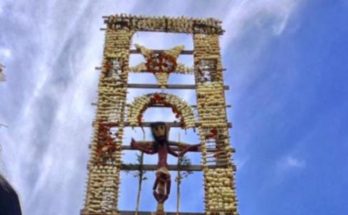By Arturo Morales Tirado
I am one of those who are passionate about the wonders of San Miguel de Allende and its authentic, unique, one-of-a-kind, and exceptional natural and cultural heritage. We have a unique opportunity to feel and experience the profound and millennium-old process of human cultures as they have evolved over more than 25 centuries by absorbing local human cultures’ complex histories and their natural environmental expressions.
In the last 2,500 years, a multi-ethnic, cosmopolitan community has been built around the municipality of San Miguel de Allende based on three Mesoamerican cultural traditions. The first, dating from the formative period, 500 B.C.E. to about A.D. 50, was the Chupícuaro culture. The Chupícuaro lived in the vicinity of proto-San Miguel, in the biological and cultural corridor of the Lerma River basin and its main tributaries, including our Laja River basin. The people contributed the first known agricultural practices in the riparian wetlands as they settled into agrarian communities.
The people left behind elemental figurines with faces delicately embellished decorative clay known as pastillaje. As in many corners of the planet, in those distant years in this Inland Frontier, they also left transcendent, beautiful ceramicware, mainly red on cream colored and the reverse. Among other archaeological sites in our municipality, ceramics have been found at the San Miguel Viejo archaeological site, from its current Chapel of Indians in the east to the shore of the Presa Allende to the west.
Second, after the Chupícuaro culture, from about A.D. 450 to 1100, the proto-Toltec ethnic group—a possible precursor of the current Otomí people—developed one of the most complex Mesoamerican cultural traditions of the northern borderlands. It was characterized by its pyramidal base buildings with sunken patios, among other features. At the beginning of the 1980s, the San Miguel archaeologist, Luis Felipe Nieto Gamiño, reported in the municipal archaeological atlas more than 100 archaeological sites of this Mesoamerican cultural tradition—five of them, by the way, in the present urban area of San Miguel de Allende.
According to stories and chronicles of the first Europeans, when they entered the lands of our current municipality, they inhabited the upper basin of the Laja River (known as the San Miguel River in the 16th century) and its tributaries. We know of the indigenous inhabitants of these lands at the time of the dramatic, controversial, and contrasting encounter with the Spaniards and their Otomí, Tlaxcalteca, and Zapotec allies. The people the Spaniards and their allies encountered were called, generically, Chichimecas. However, this name was used to describe at least a dozen unique ethnic groups, including the Guamares, Caxcanes, Guaxábanas, Pames, and Jonases, who were in further contact to the north with the Huachichiles and to the south with the Otomíes, among other groups in this frontier borderland between volcanic Mesoamerica to the south and Arid America to the north.
There are five main points that I want to make about what has been said so far. These points should be obvious, but in general, are not for most people:
1. San Miguel de Allende, due to its location and natural and cultural evolution, is part of what I have named the Inland Frontier, to the north of what was prehispanic Mesoamerica.
2. Following Dr. Miguel León Portilla’s approach, there were six places where human civilization originally evolved in villages and agricultural communities: China, around rice; Mesopotamia, Egypt, and India, around wheat; the Andean zone around corn and potato; and around 2,500 years ago, Mesoamerica, around corn. San Miguel de Allende is on the northern border of the Mesoamerican civilization zone.
3. At least three ethnic groups of the ancient Mesoamerican tradition have occupied four-fifths of the 2,500 years of the cultural evolution of the San Miguel region.
4. Additionally, the natural and cultural landscape of the Tierra Adentro frontier has the cultural imprint of two great cultural traditions: the Mesoamerican and the European, via the Spaniards from the 16th century on.
5. In this corner of wonders, there remains today, among other amazing attributes, more than 36 megafauna fossil localities, almost 100 archaeological sites, more than 100 Indian chapels, the remains of about 30 haciendas, more than 50 colonial vestiges, including presidios, bridges, and buildings linked to agricultural production, the remains of about 100 hydraulic infrastructures, such as public fountains, waterwheels, jagüeyes, filtering galleries, dams, and reservoirs. And there are multiple buildings from the Porfiriato period, restored mansions, and countless natural, cultural, tangible, and intangible heritage sites that we will continue to share in detail as part of the wonders of San Miguel de Allende.




